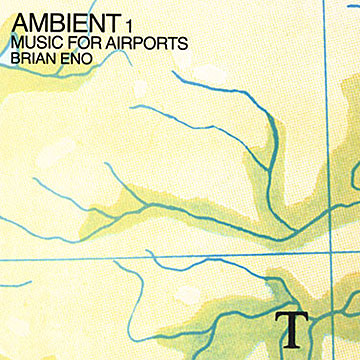Campaign Marketing Is Background Music Consumers Don’t Want
Campaign marketing is increasingly seen as background music and 'tuned out'. No surprise really that in a world where all brands push 'play' without consulting consumers that the outcome is a cacophony. It's one that consumers increasingly want to tune out, and today they have the tools to do so. From their cultivation of banner blindness , use of browser plugins like Adblock, through to enlisting more-aggressive privacy settings and skipping adverts at 8x speed. They simply don't want your message pushed at them and are taking steps to control the signal-to-noise ratio of useful vs. irrelevant data. Marketing must respond with a new quality in the relationship or risk being ignored.
 A more ambient approach is required for customer engagement. Brian Eno conceived the landmark ambient album 'Music for Airports' after a frustrating wait in Cologne airport and decided to design music to diffuse tension and provide a more contextual stimulus for traveller inspiration. Campaign management approaches have high noise levels for both consumers and brands, with large amounts of time wasted by both parties. So how might the notion of 'ambience' be applied to marketing then to remedy this? It would be a low-intrusion stimulus sympathetic to context that ultimately make people's lives easier and more interesting. It's less shouting, more listening and asking permission. It's a world where consumers call upon brands either on-demand or they magically pop up at the perfect moment. It isn't the world of push advertising and campaign management.
A more ambient approach is required for customer engagement. Brian Eno conceived the landmark ambient album 'Music for Airports' after a frustrating wait in Cologne airport and decided to design music to diffuse tension and provide a more contextual stimulus for traveller inspiration. Campaign management approaches have high noise levels for both consumers and brands, with large amounts of time wasted by both parties. So how might the notion of 'ambience' be applied to marketing then to remedy this? It would be a low-intrusion stimulus sympathetic to context that ultimately make people's lives easier and more interesting. It's less shouting, more listening and asking permission. It's a world where consumers call upon brands either on-demand or they magically pop up at the perfect moment. It isn't the world of push advertising and campaign management.
Delivering this is a major challenge. It requires an enterprise adept at modeling rich semantics, developing brand algorithms and real-time recommendations based on thousands of variables. All of it is underpinned by strong permissions and trust between people and the brands they come to depend on. Our research on useful marketing by Melissa Parrish and how context changes marketing by Carl Doty are good examples of the approaches marketers can take for this new style of customer engagement, and these topics feature heavily in our upcoming Forum For Marketing Leaders on the 13th and 14th of May.
- The stage is being set for this new ambient approach. Mark Weiser, the CTO of Xerox, crystallised this new dynamic between consumers and services back in 1988 when he proposed the model of 'ubiquitous computing' (also known as pervasive computing, ambient intelligence, or everyware). It's one where humans will interact with many devices, in the form of a set of dynamic, small, networked computers — often invisible and embedded in everyday objects. Our research on the Mobile Mind Shift is evidence of this shift, a shift towards ubiquity of service and access, where consumers interact through more devices, in more locations, and more often. Brands are responding by making their services omnipresent. People begin a transaction on one device in the morning, progress it on another, and complete it later that night on a friend’s device. As more CE devices are added to the mix, like IOT and wearables, marketers and the wider ecosystem will have to work harder to present consumers a good signal-to-noise ratio.
- Reducing noise requires better partnering. My vision report stated that standalone campaign management systems per brand are not able to develop a meaningful dialogue with customers. They are ultimately predicated on the ideas of war and hypnosis, not utility and conversation. Brands can't make the shift alone, and to deliver more value and be more relevant, brands must jointly go to market based upon the needs of similar customers. Via joint campaigns, data sharing, and greater conceptual linkage between brands — this is what will breed pervasive coherent digital experiences. For established enterprises, siloed P&Ls and management teams hamper broadening the perspective. Startups, increasingly your competitors, don't have this baggage.
It's time to re-plot your direction by rooting your strategy in customer needs. Uncovering the needs of your consumers is the critical first step to being able to deliver visible value in context to them. Switch your marketing from being ignored background music to something more ambient and useful. I'll be speaking at the Forum on how to develop a strategy based on customers' needs to underpin this new era of 'useful marketing'.
What do you think? Can the industry make the change? Will advertising as a marketing tool wither or be rewritten? How much power will consumers get and when? Drop me a line or comment below. Hope to see you at the show.
Anthony